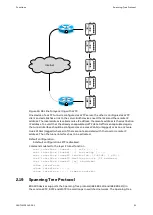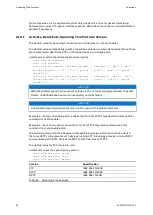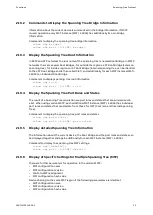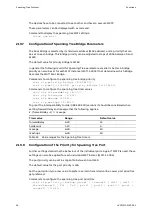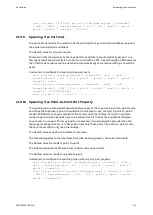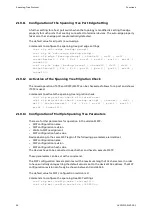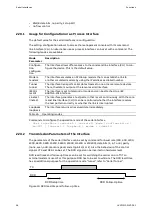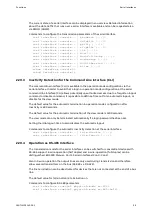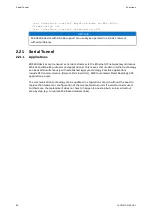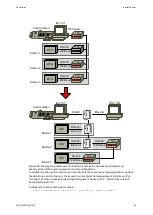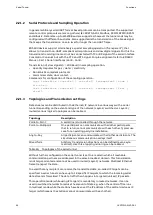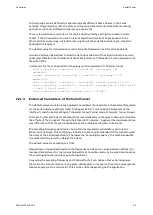
DSL Channel Bundling
Functions
The exact reversal of the error condition exists if one-sided cable faults are present like
breaches, hair cracks, shield defects with water intrusion or isolation faults.
1 In this example ordinary operation shows a signal quality of 11 dB on both sides.
Interferences spread evenly in the course of the line so that both sides have a symmetrical
value for signal quality.
SQ: 11 dB
SQ: 11 dB
Disturbances
Two-wire copper line
Figure 14: Regular cable with interferences
2 If there is a cable fault in the middle of the cable then the signal is attenuated on both
sides together with the already existing interferences so that symmetrical values are
measured for signal quality.
SQ: 7 dB
SQ: 7 dB
Cable fault
Disturbances
Figure 15: Attenuation due to cable fault
3 If there is a one-sided cable fault on the transmission line then this causes high
attenuation. As a consequence the signal quality sinks on the right side (with untampered
cable) while there are only minor reductions in quality on the errored left side.
SQ: 5 dB
SQ: 10 dB
Cable fault
Disturbances
Figure 16: Asymmetric values for signal quality due to one-sided cable fault
The already dampened transmit signal on the right side is attenuated further with the already
existing interferences while payload signal and interference are attenuated by the same
amount and the signal-to-noise ratio stays almost the same. The strong transmit signal on
the left side is dampened strongly by the cable fault and collects more interferences in the
course. On the right side a significantly worse signal-to-noise ration can be recorded.
2.16
DSL Channel Bundling
To improve the reliability against failure, the transmission bandwidth of two DSL interfaces
on a device can be bundled and connected via a 4-wire connection to the counterpart. If one
of the two connections fail, the transmission is switched automatically to the remaining one.
If the DSL connection is restored, both channels are used automatically for data transmission.
For this purpose the interfaces dsl1 and dsl2 are bundled to the virtual interface channel0.
This represents the DSL channel bundling among other also for the Spanning Tree Protocol (if
activated Chapter 2.19, "Spanning Tree Protocol").
The transmission rate is the result of the individual DSL transmission rates, the employed
distribution algorithm and the load on the two DSL channels. There are two distribution
algorithms to choose from.
48
1KGT151021
V000 1


















